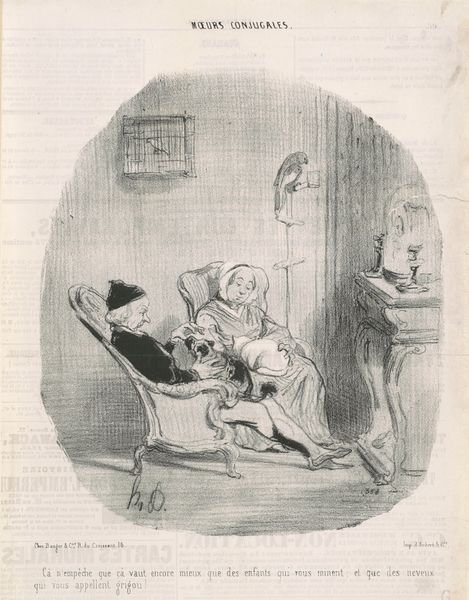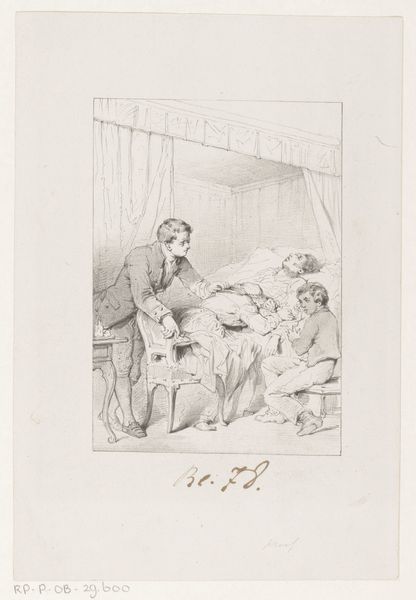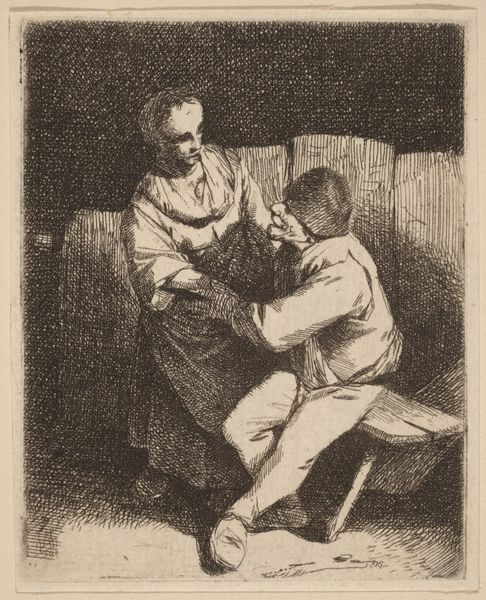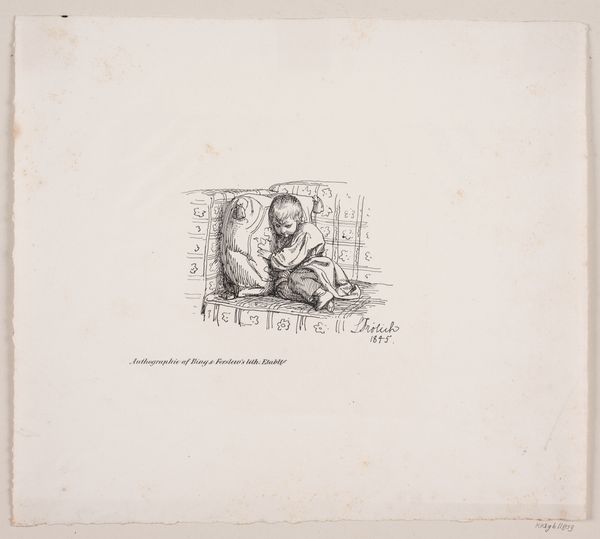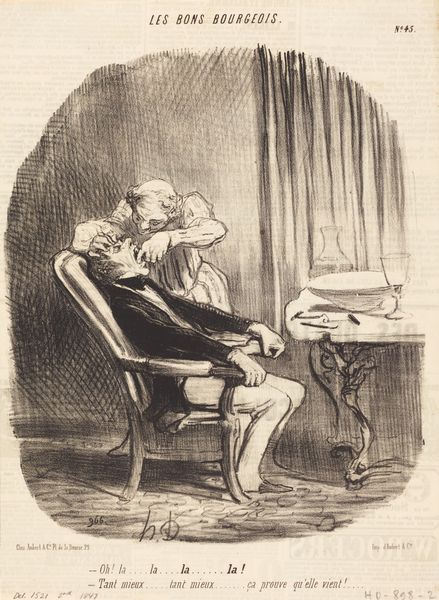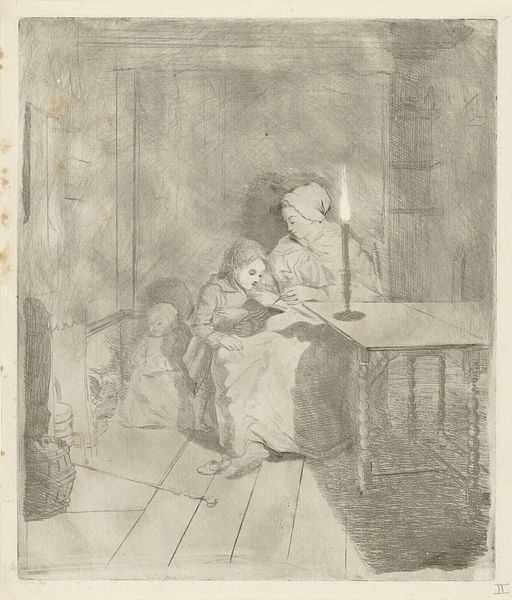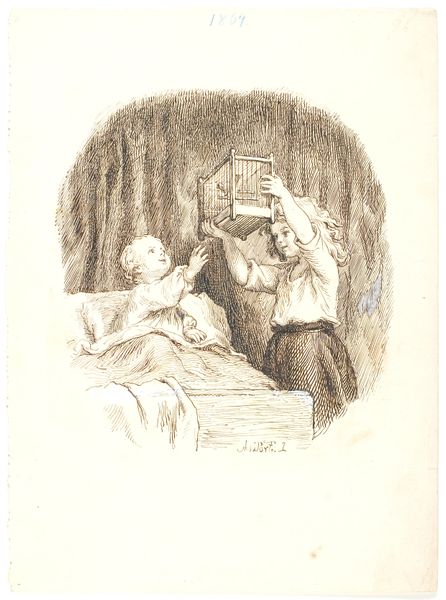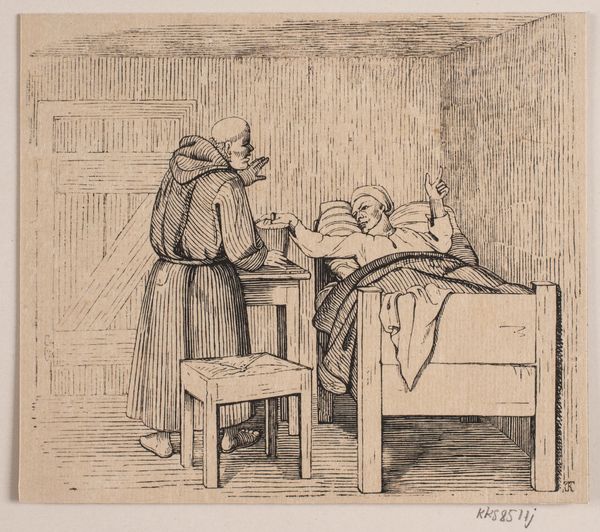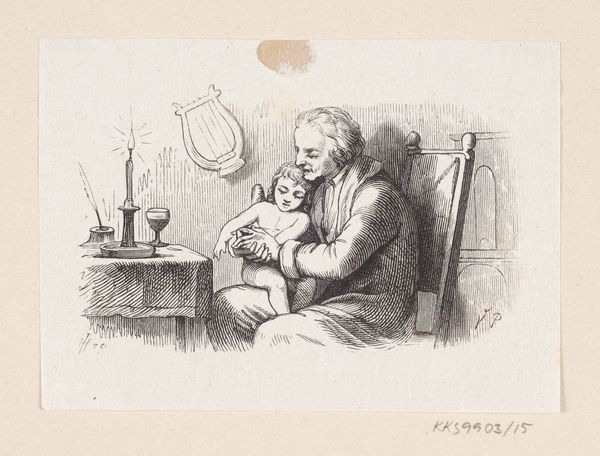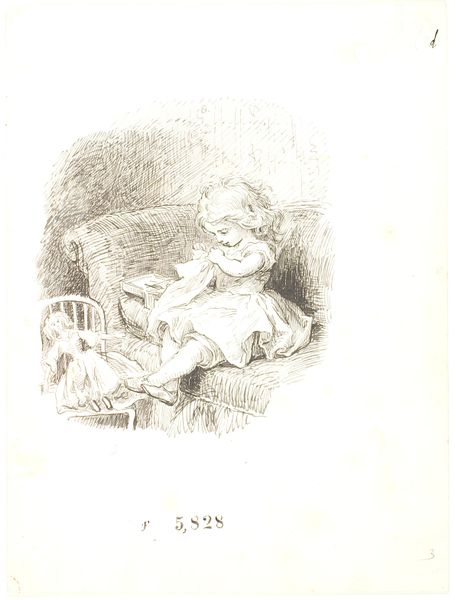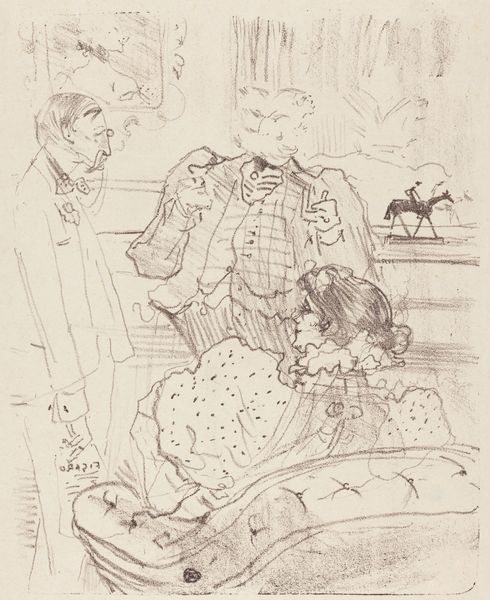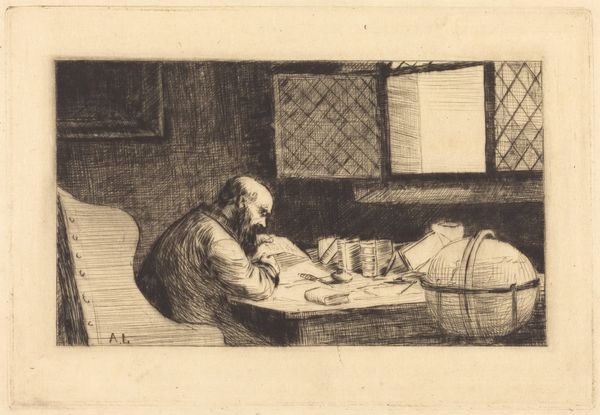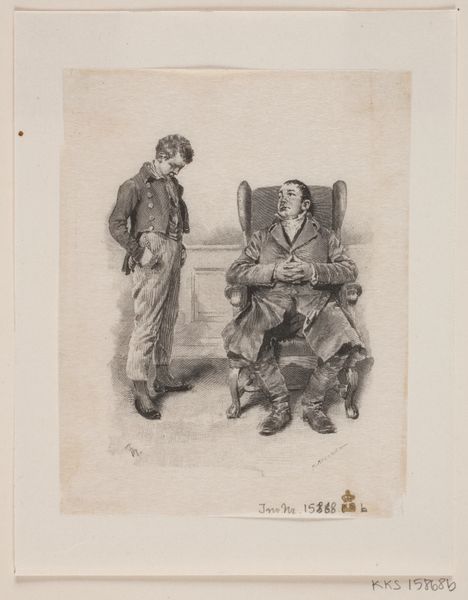
Illustration til "Reisekammeraten" i H.C. Andersen, "Eventyr og Historier", Bind 1 1870 - 1873
0:00
0:00
drawing, print, ink
#
drawing
#
narrative-art
# print
#
ink
#
history-painting
Dimensions: 75 mm (height) x 109 mm (width) (bladmaal)
Editor: So, this is H.P. Hansen's illustration for Hans Christian Andersen's "The Travelling Companion," created sometime between 1870 and 1873 using ink. The scene feels incredibly intimate, a sick man being attended to. How do you interpret this work, looking at it through the lens of symbols and imagery? Curator: Notice how the young man's hands cradle the sick man's? It’s not just a gesture of physical care; consider it as an iconography of empathy, reflecting deeply ingrained cultural values concerning compassion and comfort in the face of mortality. These depictions are often loaded with expectation about filial duty, how we "should" care for one another. Editor: So it’s about societal expectations? Curator: In part. Think about the objects included, though sparse, like the medicine bottle. Even something mundane contributes. It symbolizes illness, but also signals a societal reliance on external cures. Do you notice how the artist used light? It falls mainly on the caregiver's face, suggesting moral clarity perhaps? Editor: I see what you mean; it's like the artist wants us to focus on his goodness, or the role he is playing? Curator: Precisely! The visual cues pull on emotional levers we have inherited generationally; representations of charity or duty are rooted deeply in visual language and memory. So the "history painting" is not just past, it affects us in present. What have you gleaned thinking about cultural symbols? Editor: That an image doesn't just depict; it actively reinforces what a culture values or expects of individuals and of history. I'll certainly look at images in a totally new way from now on! Curator: Wonderful! Let us carry forward how these imageries both shape us and carry memory into future, like vessels we fill with meaning.
Comments
No comments
Be the first to comment and join the conversation on the ultimate creative platform.
